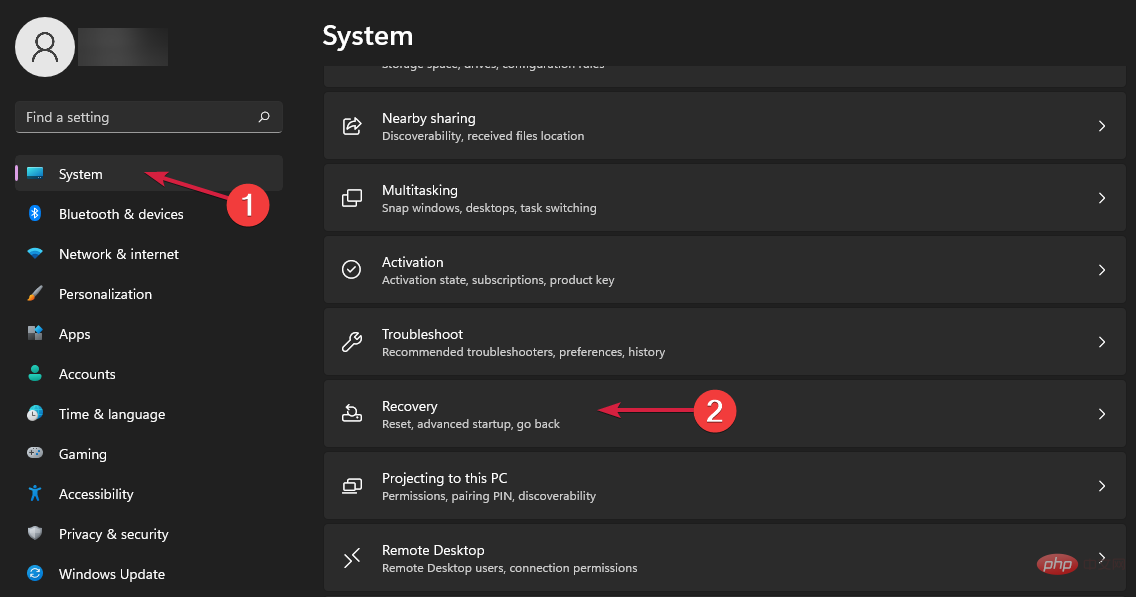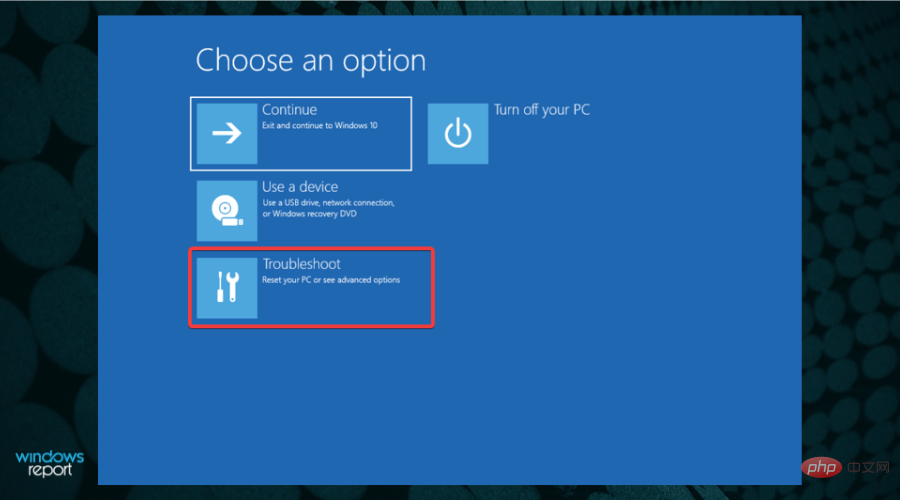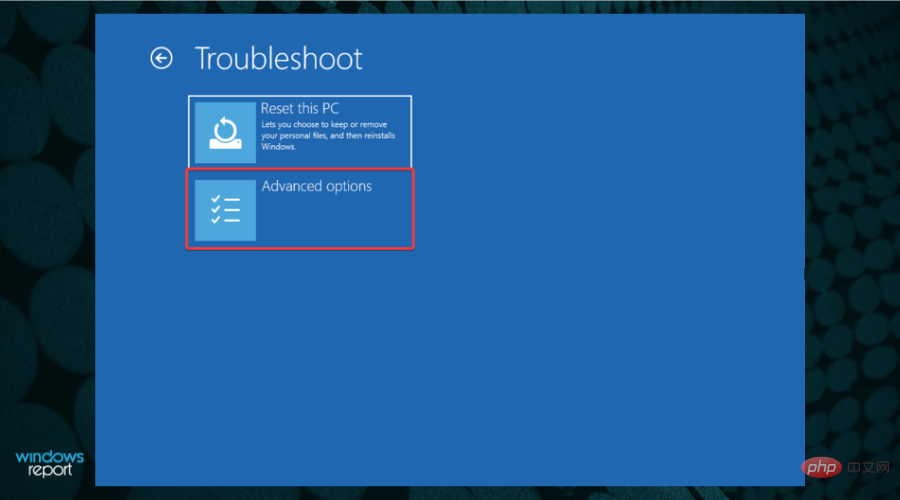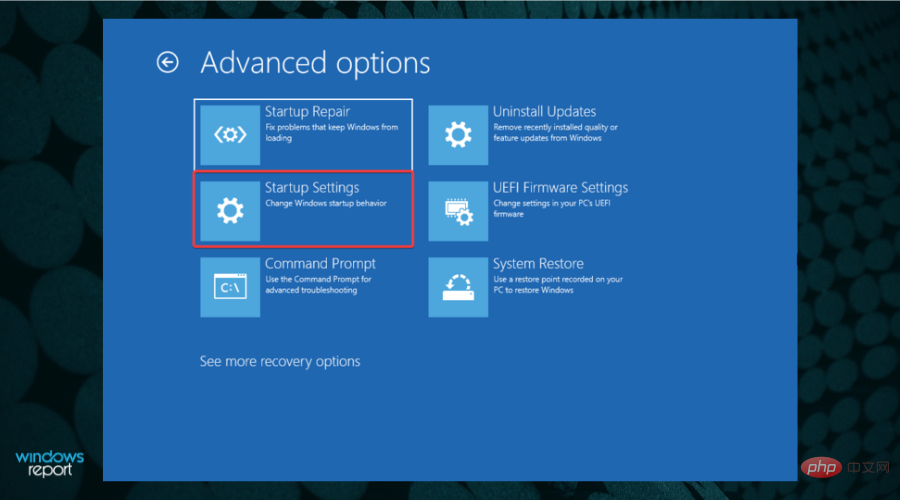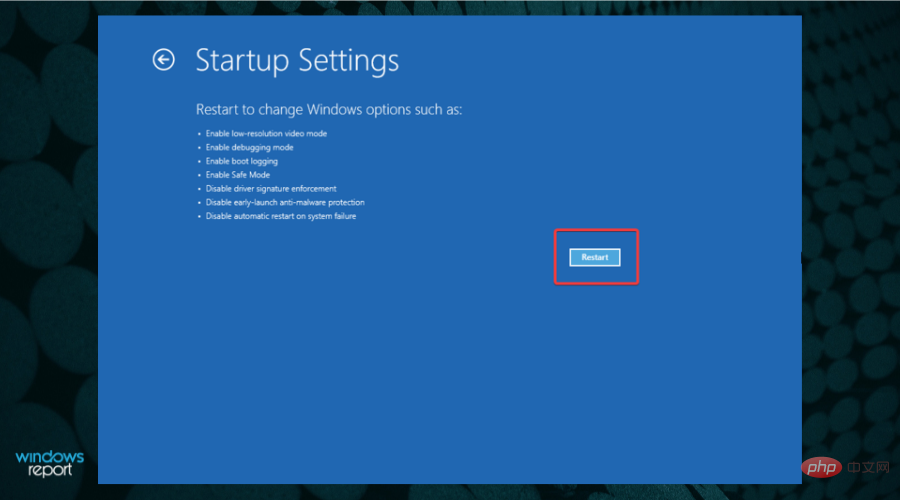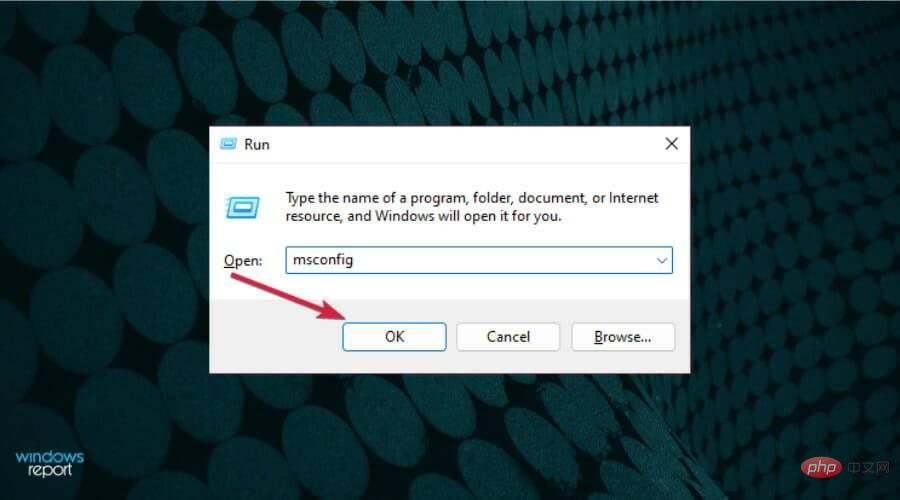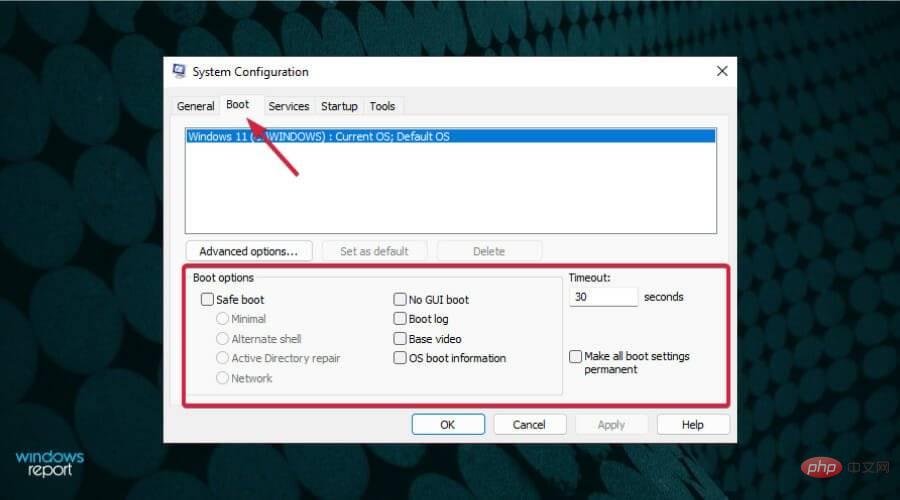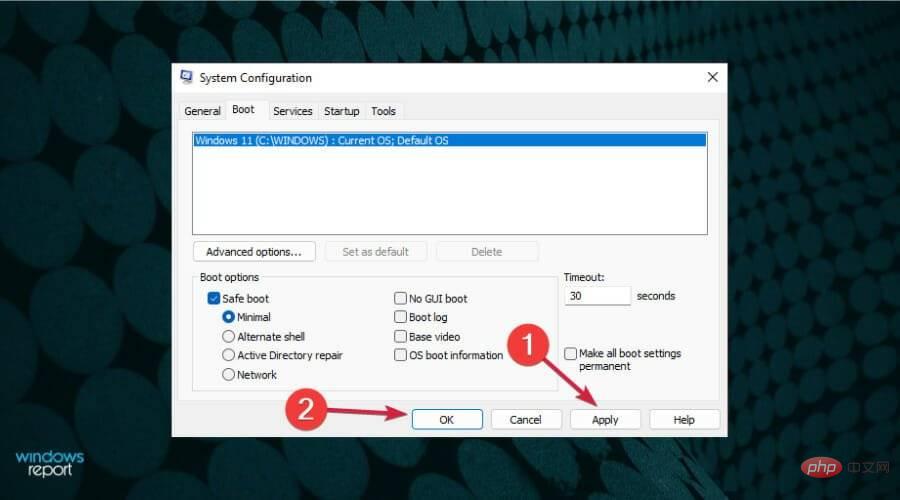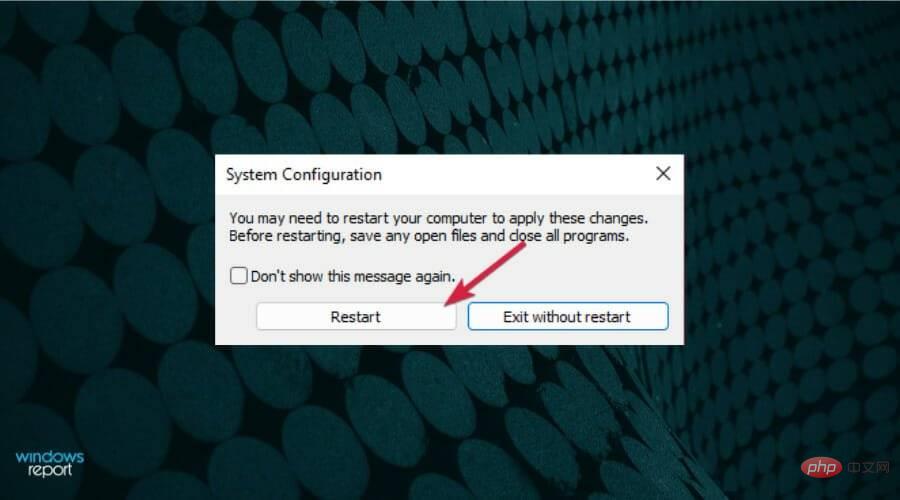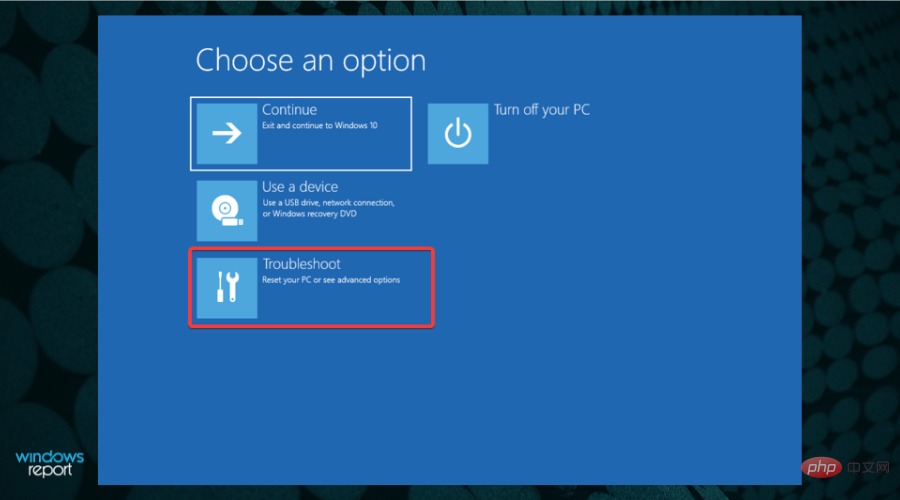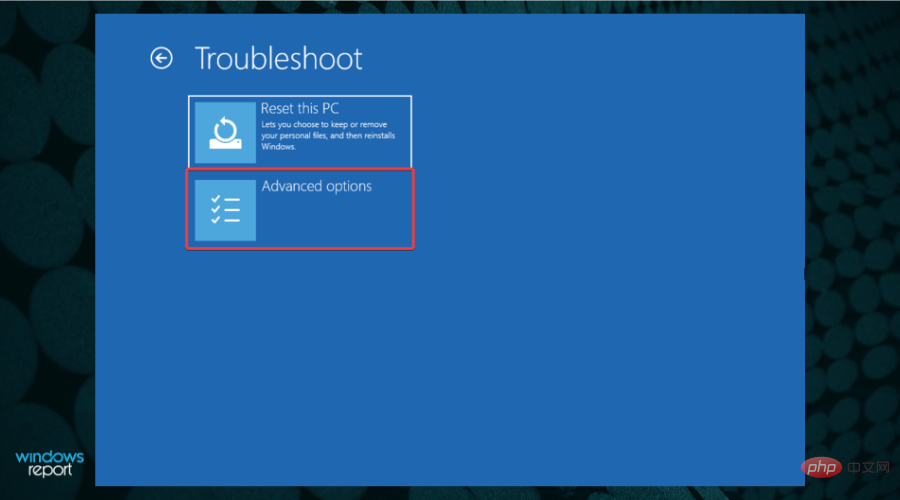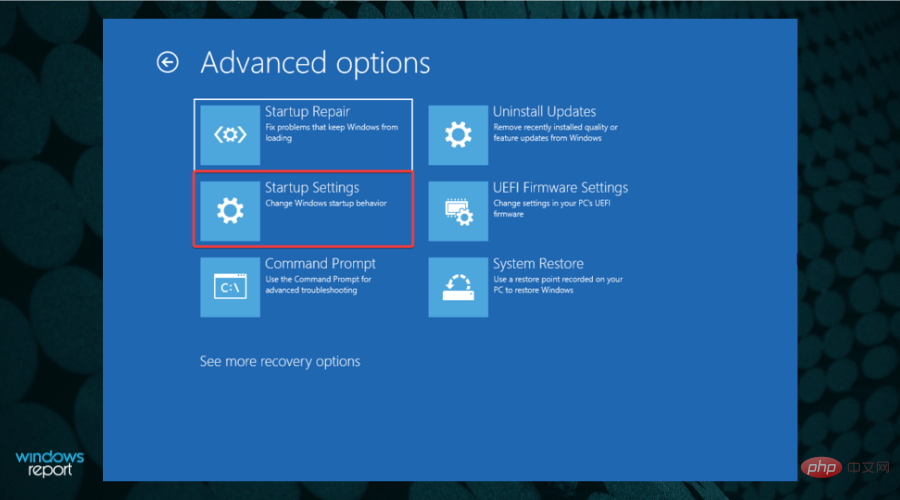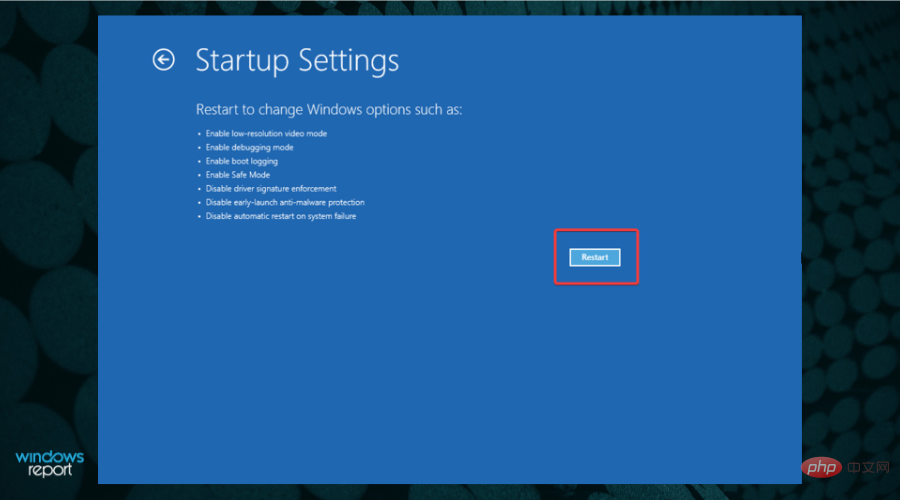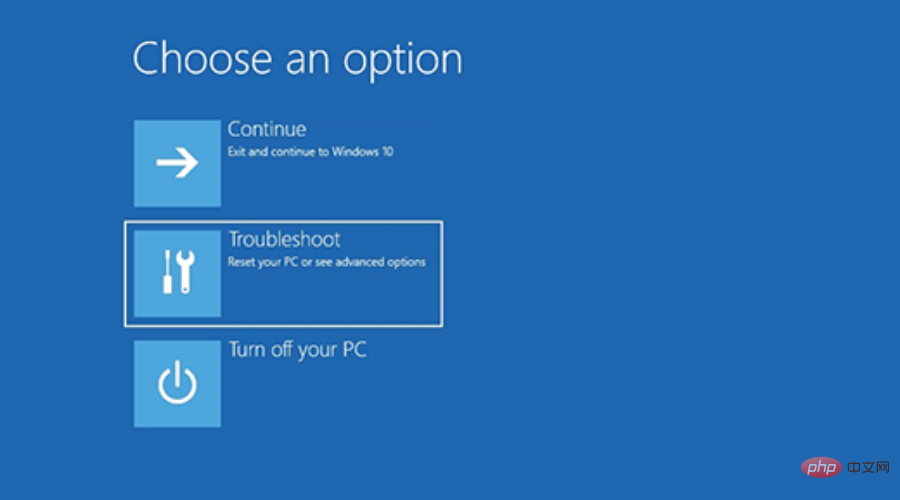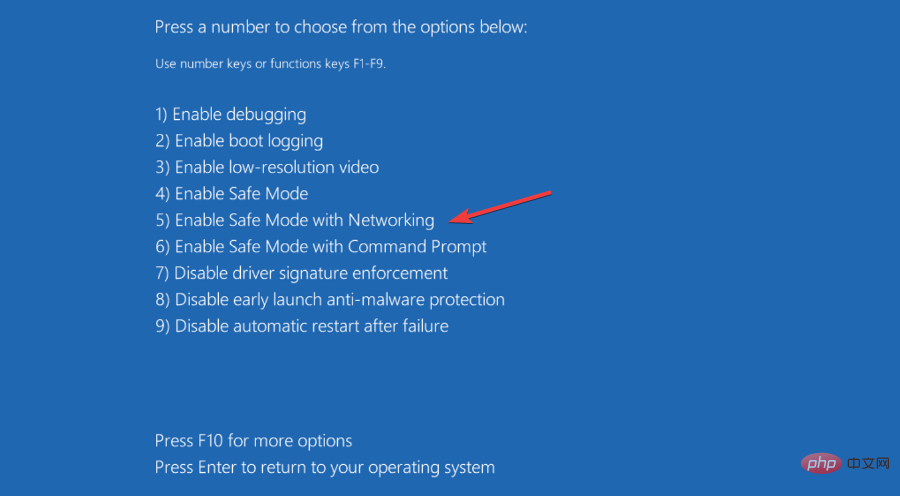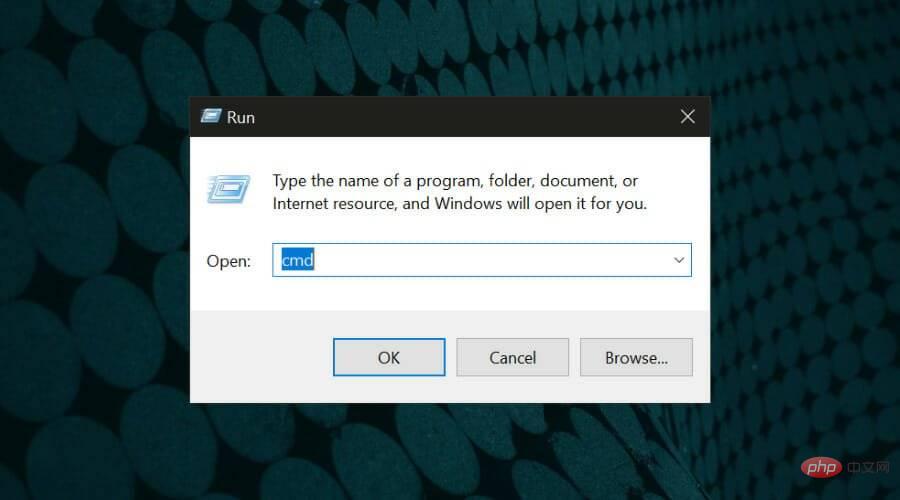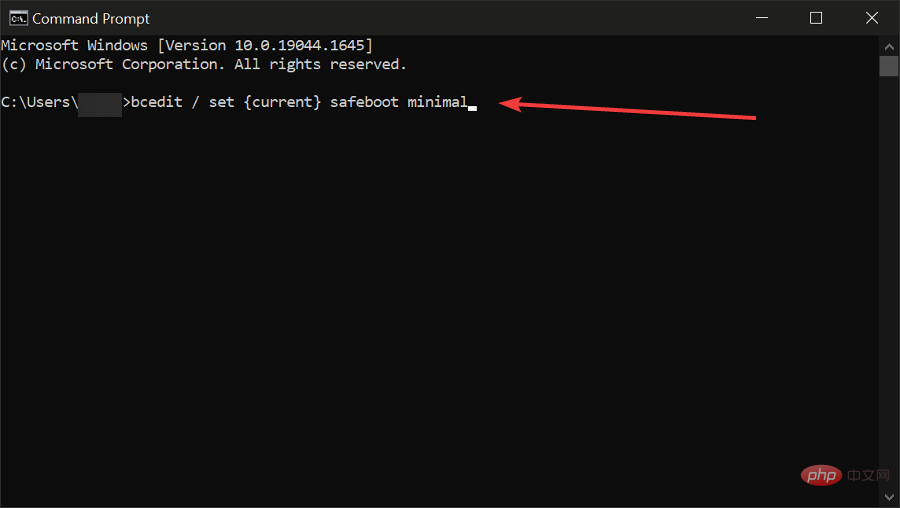8 Easy Ways to Boot Windows 11 in Safe Mode
If you encounter a bug in the operating system and need to boot Windows 11 in Safe Mode, we have you covered. There are several proven methods that can help you boot up your PC and fix any errors.
Windows is one of the most popular operating systems on the market and has been for a while.
Why should I boot in Safe Mode on Windows 11?
Although Microsoft is always working hard to optimize and improve the experience with each new version (and you already know there are some great features in Windows 11 to upgrade to), there are still a lot of problems with this operating system.
For example, sometimes the Windows 11 Start menu doesn’t work properly. Users have also complained about recurring Microsoft Edge issues. But every time this happens, the solution is right around the corner.
This is one of the reasons why Safe Mode is the preferred option when diagnosing and resolving errors and bugs.
This completely isolated environment gives you the option to better identify applications, programs, or processes that affect your complete operating system.
How does safe mode work?
First of all, you should know that it uses a limited set of files and drivers to start your operating system in a basic state.
As a result, your device will run with minimal functionality, starting only mandatory services and avoiding third-party launchers.
Putting your operating system into Safe Mode allows you to check the source of the problem and allows you to troubleshoot problems on your PC.
If you have problems with malicious files or processes that are using large amounts of RAM for no good reason, Safe Mode can definitely help you resolve them or pinpoint their source.
Additionally, you should know that this also applies to interface-related performance issues or bugs.

When should I boot in boot mode?
Here is a list of situations when you should boot Windows 11 in Safe Mode:
- When you can’t boot the operating system
- If your PC is infected with malware Software
- Safe Mode can also help you when your computer has unstable hardware drivers that can cause critical errors such as BSoD (Blue Screen of Death or Black Screen of Death)
In today’s tutorial, you’ll find some great options that can help you boot Windows 11 in Safe Mode. These are very simple, so don't worry about them being time-consuming to perform.
How to start Windows 11 in safe mode?
1. Start by
1. Click the Start menu on the taskbar and select the power icon.
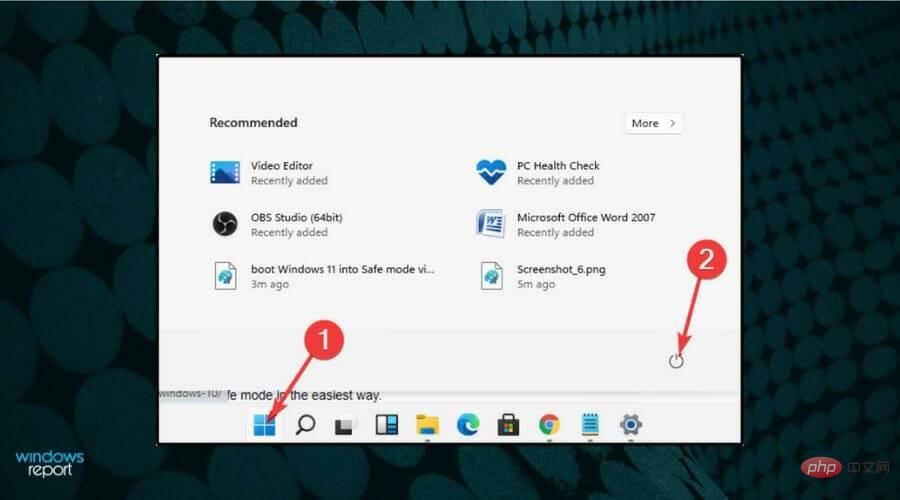
2. Hold down the Shift key on your keyboard and click Restart.
3. Once redirected to the options screen, select Troubleshoot.
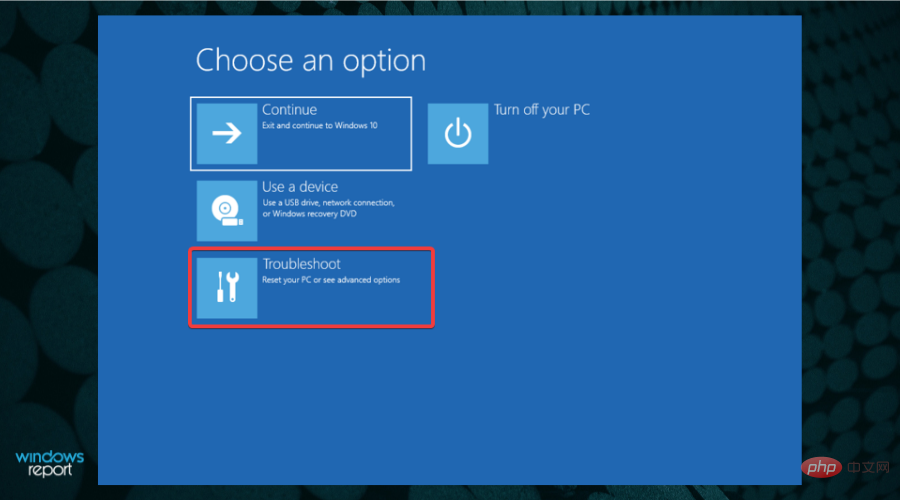
4. Click Advanced Options.
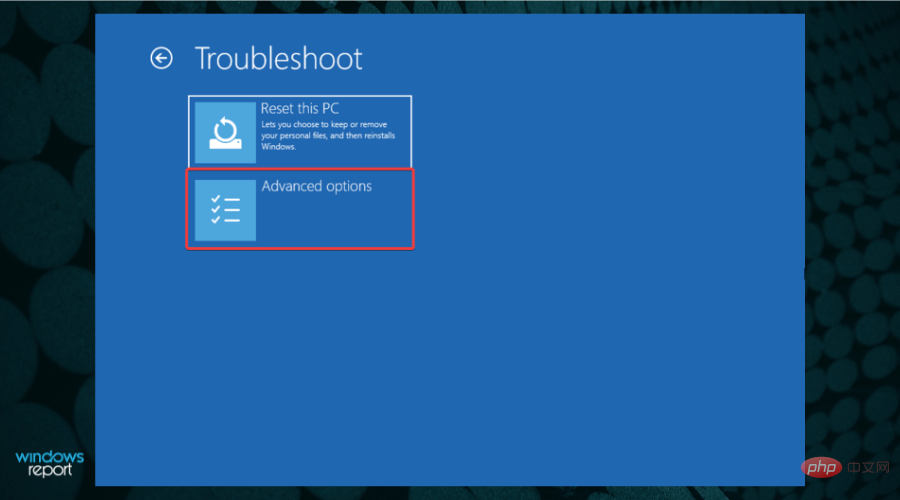
5. Select Startup Settings.
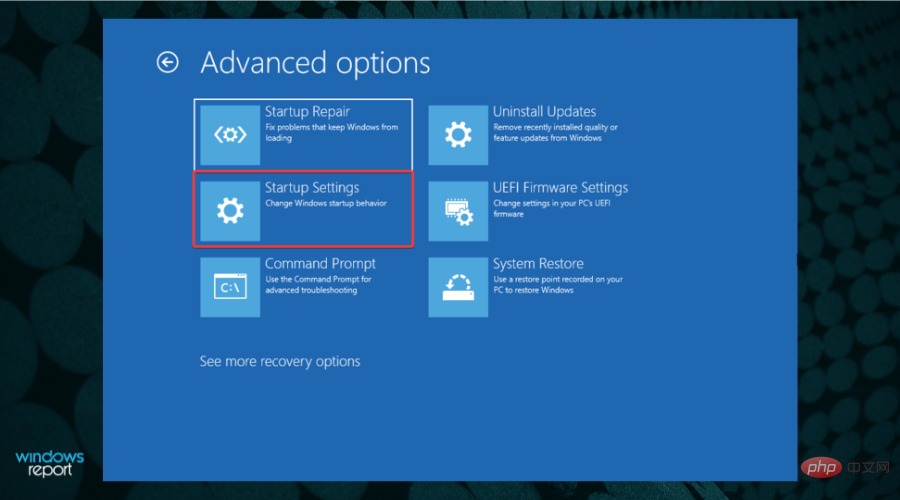
6. Click the Restart button.
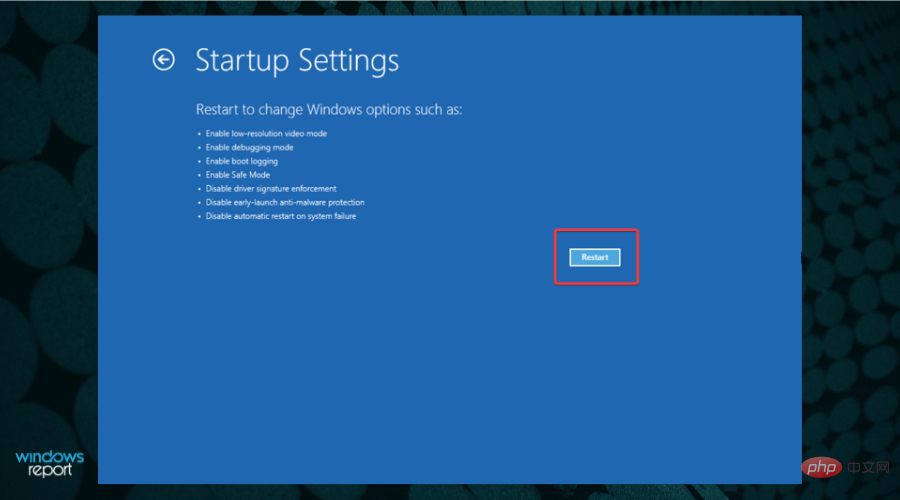
# 7. Once the PC restarts, on the next screen, select the appropriate option by pressing number 4 on your keyboard. Next, the computer will enter the safe mode environment through the BIOS.
If you need to boot Windows 11 in Safe Mode, the first way is through the boot menu. It allows you to reboot your PC and then enter safe mode through the BIOS.
You can also install the latest Windows 11 updates in Safe Mode. This is much better when no other applications are interfering.
2. Recovery via Windows
- Click the Windows button and open Settings.

- Click System and select Recovery.

- View the Advanced Startup options and click the Restart Now button.

- Your computer will restart and the Advanced Options screen will appear and select Troubleshoot.

- Click Advanced Options.

- Select Startup Settings.

- Click the Restart button.

- Press the F4 key to enter safe mode.
Another similar solution to enter safe mode is through Windows Recovery. The steps are very similar to the ones above, but with a few key adjustments in case you run into issues with your power options or keyboard.
If you're having issues after your system restarts, check out our tutorial on what to do if there's no login screen in Windows 11.
3. Through system configuration
- Press the Windows R key to start Run, type msconfig, and then press Enter or click OK.

- Select the Boot tab and view Boot Options.

- Select Safe boot, and then select the Minimal option.

- Click Apply and select OK.

- In the pop-up window, click Restart.

- Wait a few seconds and you will enter safe mode.
4. Use Automatic Repair
- When your computer shuts down, power it on and shut it down as soon as the Windows logo appears . Repeat this 3 times and you will be redirected to the Auto-Repair screen.
- There, you have to click on Advanced Options.

- Select Troubleshooter.

- Select Advanced Options.

- Click Start Settings.

- Click the Restart button.

- Press F4 key to enter safe mode.
5. Boot Windows 11 in Safe Mode from Off State
- Press and hold the power button for 10 seconds to shut down the PC. Press the power button again
- Turn on your PC. When restarting
- Press and hold the power button again for 10 seconds. After the computer shuts down, press the power button again
- to turn it on. When it boots up,
- press the power button again for 10 seconds to turn it off. Now
- Press the power button to turn on your computer.
- Let it reboot completely. It should open the Auto-Repair Panel.
 Select
Select - Advanced Options. Select the
- Troubleshooting option and you will get the same Safe Mode options as in the previous solution.

- .
- Press the power button to turn it back on.
- Start pressing
- F8 continuously until you get the boot options menu.
 Notes Some computer manufacturers require you to press
Notes Some computer manufacturers require you to press F8 Shift, while others require you to press F2. If you have this startup option, the corresponding key should appear at the bottom of your screen when you start your computer. This is an older method of entering Safe Mode and does not work on all Windows computers, especially newer ones.
Definitely worth a try as it's harmless even if your PC doesn't support it. In the worst case, nothing will happen and you will need to try something different from this list.
7. Networking
- Open the "Settings" panel from "Start".
- Select System and then select Recovery.
- From the recovery options, go to Advanced startup and select Restart now.
- Your PC will restart and display the boot settings menu. Select Troubleshoot.

- Click Advanced Options.

- Select Startup Settings.
- Click Restart and wait for your PC to restart.
- You will get a panel with several options. Press F5 to enable Safe Mode with Networking.

8. From the command prompt
- press Win key R to open "Run command "window.
- Type cmd and press Enter to open the Command Prompt.

- Type bcedit /set {current} safeboot minimum , in the command prompt and press enter.

- Wait for your PC to restart and display the Safe Mode menu.

Notes As an alternative to the previous solution, if you want to turn on Safe Mode with Networking from the command prompt, you can replace the command with the following: bcedit /set {current} safeboot network
As you can see, some of the steps required to turn on safe mode in Windows 11 are the same for multiple solutions. So, as we mentioned before, there are no major differences between the options if you need to use Safe Mode.
What should I do if I can't start Windows 11 in Safe Mode?
Some of our readers have received a strange exception handling message 0xc0000005 - Unexpected parameter error after booting into Safe Mode.
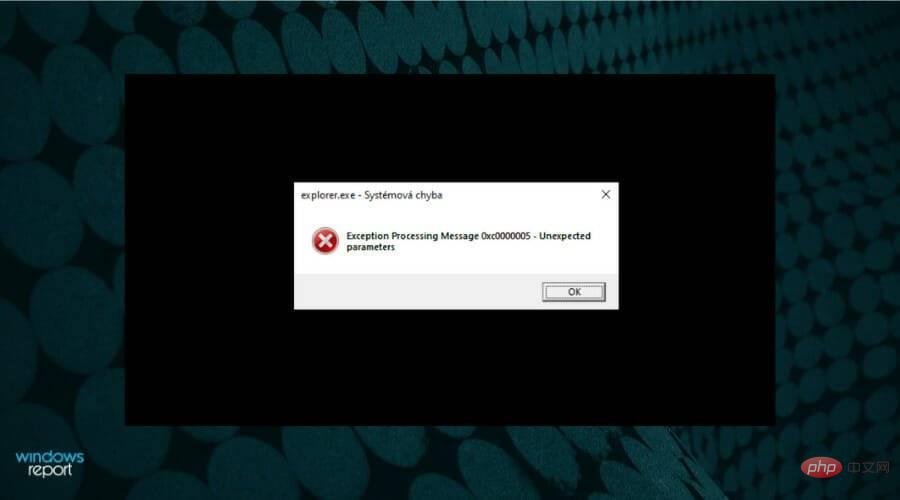
Currently, there is no way to fix this error other than restoring normal startup, but if you Update Windows 11 to version 22000.65 or later and this problem should disappear.
Since this error is related to system corruption, you can also check out our article on How to Fix Critical Process Death BSoD on Windows 11, which may help you deal with the issue.
Can I disable Windows 11 Safe Mode?
If you’re wondering if you can exit Safe Mode in Windows 11, the answer is definitely yes, and it only takes a few seconds.
For the first two solutions, after you restart your PC, you should exit Safe Mode and start Windows normally.
For the third solution, you must retrace these steps and change back to the settings in System Configuration or Command Prompt.
The process of entering and exiting Safe Mode is very simple and almost the same for Windows 10 and 11.
But if you're curious about the other key differences between the two operating systems, you can check out our in-depth Windows 10 vs Windows 11 comparison and find out all the information you need.
Safe Mode looks and feels almost identical to Windows 10, so you don’t have to worry about messing up if you’ve seen or used it before.
We hope this tutorial helped you enable W11 safe mode. If one of the above methods doesn't work, you should certainly try another method.
Your system may have some internal errors that prevent you from booting into Safe Mode using certain options (such as Command Prompt), but you can turn it on from the BIOS.
The above is the detailed content of 8 Easy Ways to Boot Windows 11 in Safe Mode. For more information, please follow other related articles on the PHP Chinese website!

Hot AI Tools

Undresser.AI Undress
AI-powered app for creating realistic nude photos

AI Clothes Remover
Online AI tool for removing clothes from photos.

Undress AI Tool
Undress images for free

Clothoff.io
AI clothes remover

Video Face Swap
Swap faces in any video effortlessly with our completely free AI face swap tool!

Hot Article

Hot Tools

Notepad++7.3.1
Easy-to-use and free code editor

SublimeText3 Chinese version
Chinese version, very easy to use

Zend Studio 13.0.1
Powerful PHP integrated development environment

Dreamweaver CS6
Visual web development tools

SublimeText3 Mac version
God-level code editing software (SublimeText3)

Hot Topics
 1655
1655
 14
14
 1413
1413
 52
52
 1306
1306
 25
25
 1252
1252
 29
29
 1226
1226
 24
24
 How to remove graphics card driver in safe mode
Feb 20, 2024 am 11:57 AM
How to remove graphics card driver in safe mode
Feb 20, 2024 am 11:57 AM
How to uninstall the graphics card driver in safe mode With the continuous development of technology, computers have become one of the indispensable tools in people's lives and work. In the process of daily use of computers, netizens often encounter various problems, among which graphics card driver problems are a relatively common one. When there is a problem with the graphics card driver, sometimes we need to uninstall the driver in safe mode. This article will introduce the steps on how to uninstall the graphics card driver in safe mode. What is safe mode? Safe mode is a special mode used to repair and resolve computer problems. When electricity
 FSP showcases its new 2500W Cannon Pro power supply and U700-B chassis, which can control four RTX 4090 graphics cards at the same time
Jun 10, 2024 pm 09:13 PM
FSP showcases its new 2500W Cannon Pro power supply and U700-B chassis, which can control four RTX 4090 graphics cards at the same time
Jun 10, 2024 pm 09:13 PM
News from this site on June 8 FSP displayed a variety of PC accessories at Computex 2024 Taipei International Computer Show, including PC cases of various sizes, new air-cooled and liquid-cooled radiators, and a variety of new power supplies. ▲Picture source: Wccftech FSP is showing off its new CannonPro2500W power supply this year, which has been upgraded to ATX3.1 and Gen5.1 standards and has passed 80PLUS230VEU Platinum certification. This power supply is equipped with four PCIe12V-2x6 connectors and can power four RTX4090 graphics cards at the same time. In addition, FSP also launched a new MEGATI series power supply, which adopts 80PLUS platinum design, complies with ATX3.1 standard, has a rated power of 1650W, and is equipped with
 Assassin 4 is upgraded again, Kyushu Fengshen releases Assassin 4 VC LCD air-cooled radiator and other new products
Jun 12, 2024 pm 09:39 PM
Assassin 4 is upgraded again, Kyushu Fengshen releases Assassin 4 VC LCD air-cooled radiator and other new products
Jun 12, 2024 pm 09:39 PM
This site reported on June 5 that Kyushu Fengshen released the enhanced version of the Assassin 4 flagship air-cooled radiator Assassin 4VLCD at the 2024 Taipei International Computer Show. Assassin 4VCLCD maintains the basic structure of the original Assassin 4 dual towers, dual fans and 7 heat pipes, and upgrades the traditional copper base to a VC vapor chamber, which significantly improves the thermal conductivity efficiency and further increases the heat dissipation capacity from 280W to 300W. At the same time, Assassin 4VCLCD is equipped with a top-cover LCD screen that can display CPU status parameters in real time. As for other tower air-cooled radiators, Kyushu Fengshen has launched a digital display PRO version for its AK400/620 products. The new product has a larger screen area, can display more data at the same time, and supports color imaging that can detect system health in real time.
 How to smoothly switch Win11 system from safe mode to normal mode
Mar 27, 2024 pm 04:31 PM
How to smoothly switch Win11 system from safe mode to normal mode
Mar 27, 2024 pm 04:31 PM
When the computer encounters a problem, it needs to enter safe mode for troubleshooting and repair. After the problem is solved, how to smoothly switch the system back to normal startup mode? The following brings you a detailed operation plan on how to smoothly switch the Win11 system from safe mode to normal mode. Let’s take a look. Operation method 1. In safe mode, click "Start" in the taskbar in the lower left corner and select "Run" in the option list. 2. In the pop-up window, enter "msconfig" and press Enter to open. 3. After entering the new window, click the "General" tab at the top, then find "Start normally (load all device drivers and services)" at the bottom and check it. Extended Reading Security and Protection Windows Firewall Settings Error Code Installation T
 Corsair RMx series ATX 3.1 gold medal full-module power supply launched in China: 750W, 850W, 1000W optional, starting from 999 yuan
Jul 25, 2024 am 01:39 AM
Corsair RMx series ATX 3.1 gold medal full-module power supply launched in China: 750W, 850W, 1000W optional, starting from 999 yuan
Jul 25, 2024 am 01:39 AM
According to news from this site on July 24, Corsair announced that the RMx series ATX3.1 gold medal full-module power supply will be launched in China today, offering three power models with prices starting at 999 yuan. RM750x: 999 yuan RM850x: 1099 yuan RM1000x: 1399 yuan According to reports, Corsair’s new RMx series power supply has passed the Cybernetics Gold Certification. The 750W model has obtained A+ noise certification, the 850W has obtained Class A noise certification, and the 1000W model has obtained A-noise certification. In addition, this series of power supplies adopts the Intel ATX3.1 standard, supports the PCIe5.1 platform, and natively supports the 12V-2x6 cable used by RTX40 series graphics cards. In terms of internal materials, Corsair RMx series power supplies use
 Solution: Deal with the black screen problem of Windows 10 system that cannot enter safe mode
Jan 09, 2024 am 09:58 AM
Solution: Deal with the black screen problem of Windows 10 system that cannot enter safe mode
Jan 09, 2024 am 09:58 AM
When we use the win10 operating system, in some cases we may encounter a black screen on our win10 operating system and be unable to enter the safe mode of the system. Regarding this problem, the editor thinks that it may be because the compatibility of our computer is not very good, or there is a problem with the computer driver, resulting in a black screen and the inability to enter safe mode. So for the specific solution steps, let’s take a look at what the editor did~ What to do if the Windows 10 system has a black screen and cannot enter safe mode. Method 1: 1. Turn on the system and long press the power button to turn it off and then turn it on again. Repeat about three times. 2. When you see the Advanced Options interface, click Advanced Options--"Troubleshooting--"Advanced Options--"Command Prompt. 3. Enter in the prompt: C: ※definite
 ADATA XPG FUSION 1600W ATX 3.0 titanium power supply is on sale: supports dual-channel RTX 4090, 4999 yuan
Mar 11, 2024 pm 04:50 PM
ADATA XPG FUSION 1600W ATX 3.0 titanium power supply is on sale: supports dual-channel RTX 4090, 4999 yuan
Mar 11, 2024 pm 04:50 PM
According to news from this site on March 11, the national version of ADATA XPGFUSION1600W titanium power supply has been put on JD.com. This power supply is compatible with ATX3.0 and PCIe5.0 standards, supports dual-channel RTX4090 graphics cards, and sells for 4,999 yuan. According to reports, the XPGFUSION1600W titanium full module power supply is a product jointly developed by ADATA and Delta Electronics. It has 80PLUS titanium and Cybenetics titanium certification. The overall size of the power supply is 210x150x86mm, with a built-in 135mm fan, dual ball bearings, and a rotation speed of 2700±10 %RPM, supports XPGPRIME management software parameter adjustment. In terms of interface, this power supply is equipped with a 24Pin motherboard power supply.
 Haiyun Qinglong 1200W ATX3 power supply PX-1200 is on sale: 12V-2x6 interface, 80Plus platinum certification, 1999 yuan
Jun 03, 2024 pm 09:49 PM
Haiyun Qinglong 1200W ATX3 power supply PX-1200 is on sale: 12V-2x6 interface, 80Plus platinum certification, 1999 yuan
Jun 03, 2024 pm 09:49 PM
According to news from this site on May 17, Haiyun Qinglong 1200WATX3 power supply PX-1200 is on sale. It uses a native 16Pin12V-2x6 power supply interface and supports 4090 graphics cards. The price is 1,999 yuan. Haiyun Qinglong PX-1200 uses a native 16Pin12V-2x6 power supply interface, supports power supply for RTX4090 graphics cards, supports intelligent start and stop of fans, uses all Japanese capacitors, and provides a 12-year warranty. Haiyun Qinglong PX-1200 can exceed twice the peak power, which is higher than Intel standard, and the retention time can be twice that of ATX3.1 standard. Haiyun Qinglong PX-1200 adopts Qinglong's limited blue and white PVC process embossed wire, which is soft and easy to bend, better for routing, 16AWG wire diameter, and H++ grade high-voltage resistance




